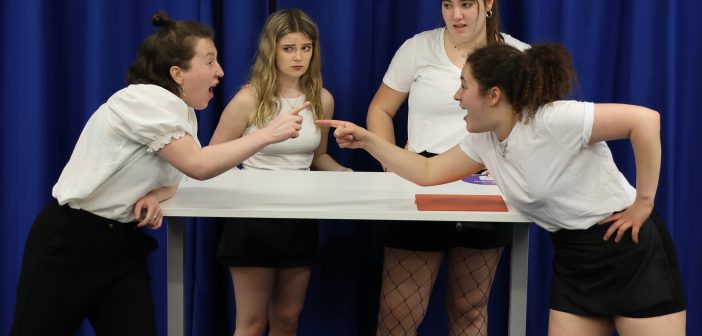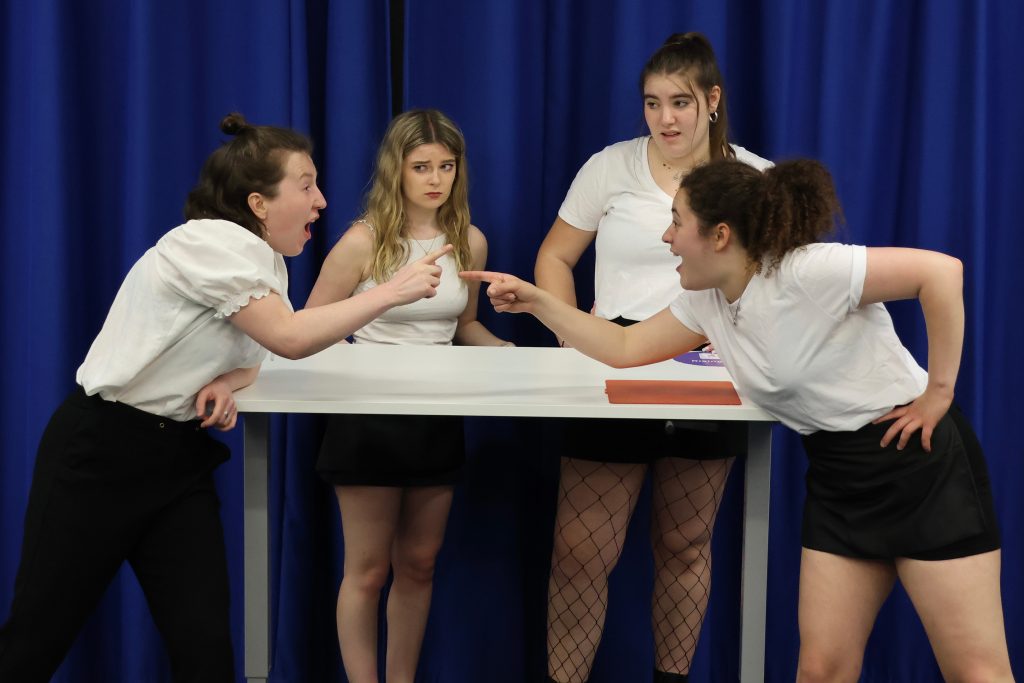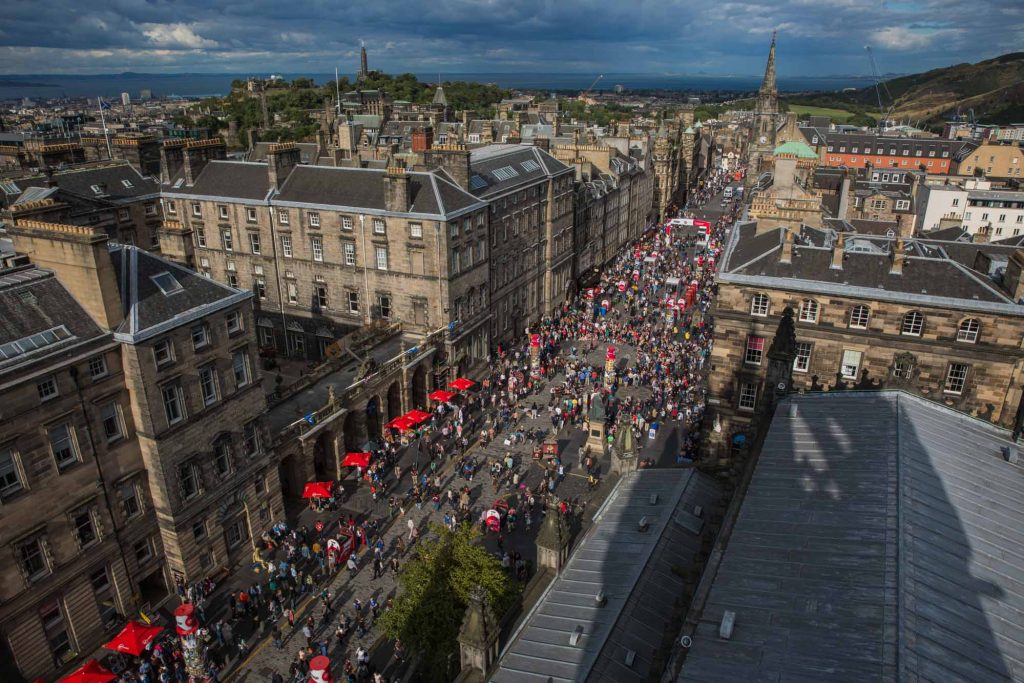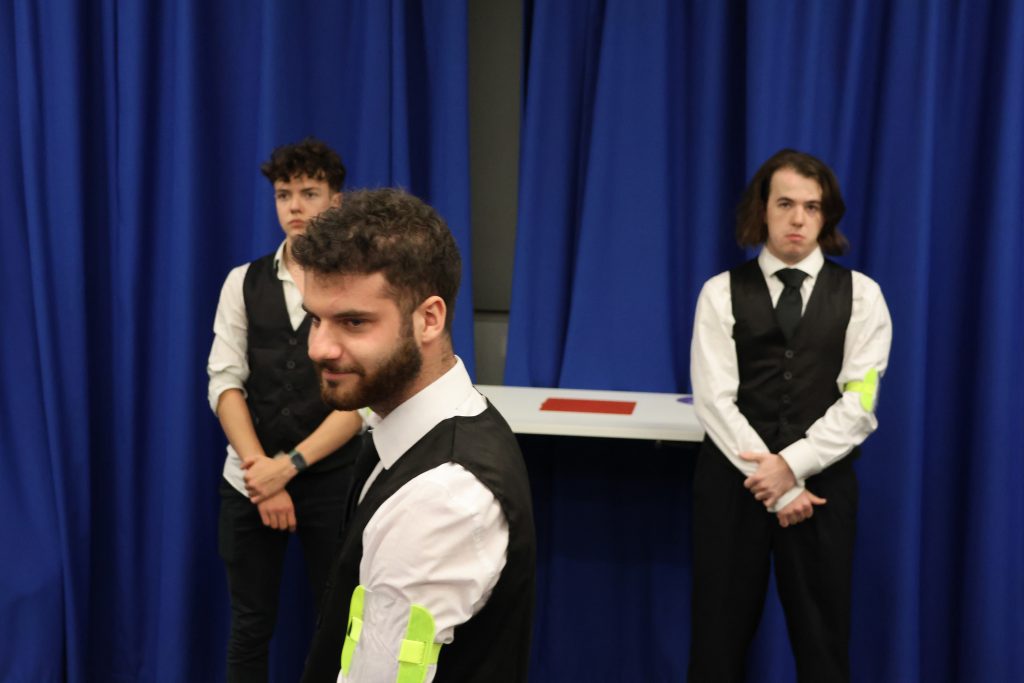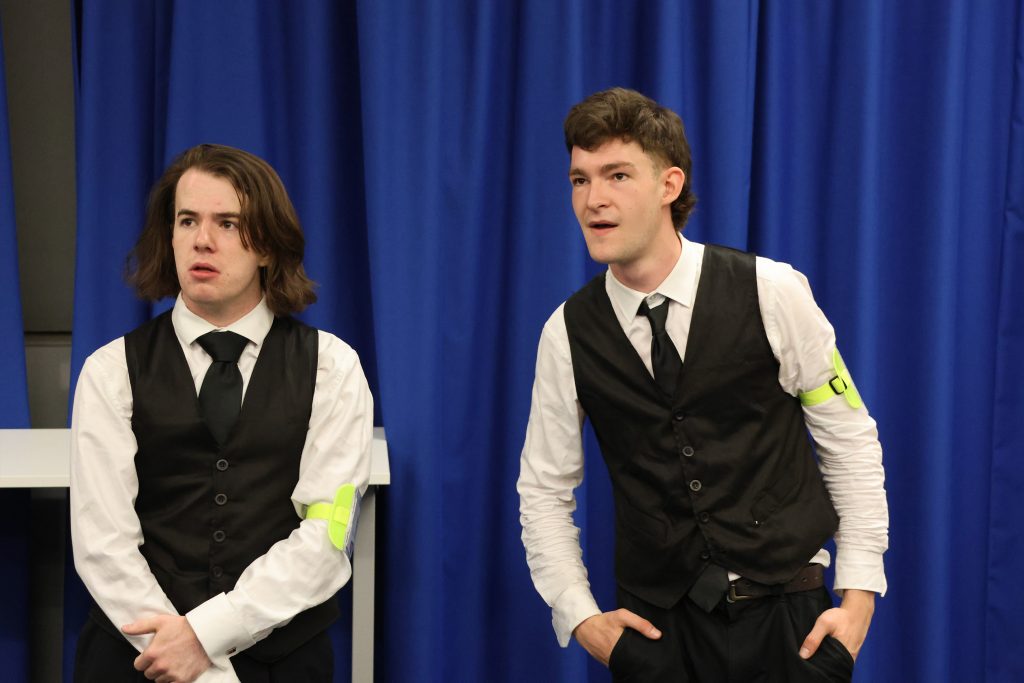A show that will doubtless see night-life-numbers at the Fringe this August
-
10
Paperlight Theatricals will, once again, be heading to the Edinburgh Festival Fringe to showcase talent, dedication, and general theatrical hilarity. I was lucky enough to be present at an Open Dress Run before the troupe head up to one of the most bafflingly popular events in the world.
The Edinburgh Festival Fringe is a truly massive event. In fact, according to The Guardian, it’s the third biggest ticketed event in the world, only being surpassed by the Olympics and the World Cup. So how did it start?
To get to the answer to that question, we have to go to the Edinburgh International Festival, an arts festival that began in 1947 with a vision to bring people together after the terrible darkness of the Second World War that had so recently come to an end. This festival had more pragmatic intentions as well. Rudolf Bing, the EIF’s first director, had felt the financial impacts of the war as the General Manager of Glyndebourne, a prestigious opera house in East Sussex. Not only had there been little time for the arts during that era, with cultural as well as financial impacts, but many artistic centres had been destroyed or heavily damaged during the conflict as well. The colourful and progressive theatre scene in Germany, so enjoyed by playwrights like Brecht, had been rather stifled by the Nazi party’s reign. Edinburgh, with its natural beauty, historical heritage and generally compact nature, was seen as an ideal candidate to host the event away from the ruins of the war. So it was in the spirit of unity, and the reignition of art, that the Edinburgh International Festival began. Logistically, especially given rationing was still in effect, putting on the festival at all was a great feat, as people from all over the world showed up to watch a plethora of artists who had been invited to perform.
What the organisers were, perhaps, not expecting, was some of the people arriving in the city to be performers that had not been invited to perform. Eight uninvited theatre groups had just decided to turn up and set up shop around the edges, or fringe, of the Edinburgh International Festival. As you may have guessed, this became the Edinburgh Festival Fringe, and started to pick up popularity far quicker than any of those original theatre groups would have imagined. By 1958, the Festival Fringe had become a trend enough within itself to warrant the creation of the Festival Fringe Society, which has since adhered to the original constitution’s focus on inclusivity. The Society does not vet the programme; so as long as you have ‘a story to tell and a venue willing to host’ you, you’re welcome at the Fringe.
Many household names have made their debut at the Fringe, such as Phoebe Waller-Bridge (and Fleabag itself) in 2013, Aisling Bea in 2012 and Reginald D. Hunter back in the ancient days of 2002. Because of its anything-goes backbone, Fringe shows can be infamously wacky, weird, and way-out. People love getting stuck in when it comes down to it, and it was definitely with this in mind that Paperlight Theatricals brings up Bouncers and Shakers in August.
Bouncers and Shakers splits gender right down the middle as it takes a look at the nightlife of a town in the north of England during the 80s, with the first act of this under-an-hour play being taken from the viewpoint of the ‘Shakers’ cocktail waitresses. After the first act, these four leave the stage and we are introduced to the four ‘Bouncers’ who take us to the end. It’s not… quite as simple as this though, as both the ‘Shakers’ and the ‘Bouncers’ get to play a whole host of characters, some seemingly not so sure who they even are, all while making sure to keep the audience as involved as possible.
Even as we arrived at the scene, we were greeted by the ‘Bouncers’ making sure we didn’t bring any contraband, like alcohol or missiles, into the venue. As we were getting seated, the ‘Shakers’ made sure, from their lookout posts on stage, that we didn’t sit in any restricted seating. Otherwise, they wiped down tables and swept floors as we took our un-restricted seats. This already made the performance feel like more of an experience than simply a window into someone’s life, and they kept up this dramatic aspect as part of the event throughout. I’m going to get one of the… stranger successes of the show out of the way fairly quickly. There were only up to four people on stage at the same time, but they still, sometimes, had to mimic the inside of a club. So the ‘dancing’ that was going on was usually the kind that isn’t that embarrassing when you’re surrounded by a hundred other drunk people in a room where the lighting is so bad most people wouldn’t recognise their own mother. Not that you’d want to, of course. By committing to their roles and the location that the performance space represented (and the general atmosphere of the show), no one fell into the trap of making the solo, well-lit, totally-sober dance awkward at all. I, at least, thought that was an achievement worth mentioning.
The most obvious achievement worth mentioning was the incredible range showed by the actors on stage as they seamlessly flitted through a wide range of highly accentuated characters. All four ‘Shakers’ (Rachael Crozier, Emily Ellis, Kat Fevyer and Megan Lawrie), starting off by playing women, were given the opportunity to display their considerable acting talent that included playing men and women of a wide range of ages. One thing that couldn’t be said about (most of) these performances was that they were massively subtle; they were pumped up, over the top and hilarious. The audience loved this wide range of characters, from the entertaining shop assistants to the boisterous men that reminded me of Blackadder’s Flash Gordon. Just even less fun to be around. The ‘Bouncers’ (Lily Akers, Morgan Allen, Pietro Andreotti and Fletcher Stafford) had their fair share of characters as well. Lily filled in for Dominic Leach, who was sadly unable to perform, but I’m sure he’ll be pleased to know just how brilliantly Lily took on the challenges of his role as if she had been rehearsing with the rest of the cast the entire time, and not just managed to learn everything in the previous 24 hours.
Not only were the transitions between characters as seamless as they were acute, but the blend of individual performances and group work held the same qualities. At times, the four actors would turn into one unit, acting like a pseudo Greek Chorus to their own performances, flowing between the two types of performance without feeling jarring or uncomfortable. The praise here, as it should for every aspect of the show, must be shared with directors Liv Grindon and Emily Norman, who have clearly worked enormously hard to make this machine-like contraption of a play feel as well oiled as Gordon Ramsay’s pans. They have clearly worked incredibly hard with the cast in making this baffling play run smooth and snappy – and good thing too. Any major accidental pause in such a fast paced plot would hugely hold the play back, so the cast’s ability to brilliantly manage the pace and keep the dialogue flowing was very impressive. Of the ‘Shakers’, Kat was particularly good at helping this flow, allowing mildly insane performances like Emily’s ‘posh bloke’ to fit in with the rest of the goings-on, and highlighting the comedic value in her over-the-top representation of late-night customers at the bar – another audience favourite. Rachael brought an energy to the tired bar workers to keep the play from losing the audience’s focus and glued the team together while they were on stage, and Megan brought some crucial variation to some of the male roles that had threatened to blur into one. The cast supported each other and knew where the focus should be at all times, moving it between themselves whenever the play called for it.
The ‘Bouncers’ danced themselves onstage with snap, style, and fun. The comedic, mildly confused side-eye is an incredibly effective comic tool when used well, and is all too often overdone or just not very funny. Not here though; some of the subtle reactions from the ‘Bouncers’ to their antics may not have been as laugh-out-loud funny as Fletcher’s incredible delivery of the word ‘cashew’, but they added a comic richness to the group performance. There were some very simple yet effective ideas in this section. A personal favourite of mine was when the four of them had their backs towards the audience and were delivering their lines amongst a rising tally of numbers – the pints that had been downed during their eventful night out. It was a very entertaining and appealing section and was paced perfectly from the actors. Again, the actors’ transformative capabilities were both impressive and unsettling, as I’m fairly sure Morgan transformed himself into an even more deranged Wicked Witch of the West during a particularly… passionate scene. Pietro’s comedic timing was scarily impeccable, and Lily’s nuance between her ‘one of the boys’ and ‘back to work’ bouncer-state was so, so funny. And may I mention Fletcher’s ‘cashew’ again? Definitely line-delivery-of-the-day.
Liv, Emily, the cast and all the producers of Paperlight Theatricals should be extraordinarily excited to bring Bouncers and Shakers to the illustrious soup of theatre that is the Edinburgh Festival Fringe. It’s one of those very ‘fringe-y’ shows that’ll leave you in tears of laughter as the actors transform themselves through a menagerie of timeless stereotypes from days gone by. If you’re able to, I’d highly recommend catching them at the Fringe itself during their run from the 19-24th August. Just don’t bring any missiles – the lads’ll get ya.

